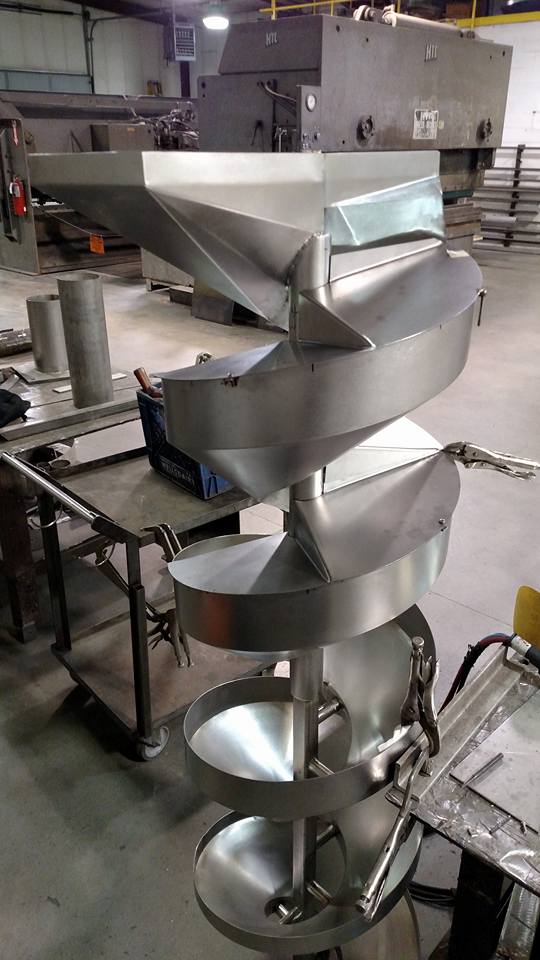 Are Spiral Chutes a safe way to convey food? Consumers rightly demand that what we eat is handled safely. The short and definite answer is yes, a Spiral Chute -- as designed and manufactured by Stevenson Company -- is an ideal method to safely move product.
Are Spiral Chutes a safe way to convey food? Consumers rightly demand that what we eat is handled safely. The short and definite answer is yes, a Spiral Chute -- as designed and manufactured by Stevenson Company -- is an ideal method to safely move product.
Standards change for the better, and Stevenson Company is leading the way with cleanable, food-safe materials and workmanship. Spiral Chutes are compliant with regulations set forth by the United States government. Specifically, the Food and Drug Administration has detailed codes to ensure sanitary practices, the latest being the Food Safety Modernization Act (FSMA). The full text is available online, but to simplify we narrowed down the sections relevant to Spiral Chutes; below we address how FDA standards are met:
Are Spiral Chutes designed as to be adequately cleanable?
- Yes, Stevenson Spiral chutes may be cleaned with mild cleanser and water. Stainless steel can withstand most cleaning compounds and sanitizing agents. Design ensures people and tools can reach into the Spiral Chutes for ease of cleaning.
Does design preclude the adulteration of food with lubricants?
- Yes, our Spiral Chutes have no moving parts. Lubrication is not required. Foods have natural oils, which do not degrade the Spiral Chute in any way.
Does design preclude the adulteration of food with metal shavings?
- Yes, when properly installed, there is no contact between the Spiral Chute and any other machinery or equipment, such as conveyors or bins. The lack of metal-to-metal contact eliminates metal shavings.
Are Spiral Chutes made of nontoxic materials?
- Yes, in trace amounts, nickel and chromium are non-toxic. Stainless steel does not flake, so the presence of either element would likely be the result of deep scratches or modifications by someone other than the experts at Stevenson Company.
Are food-contact surfaces corrosion resistant?
- Yes, stainless steel offers superior corrosion resistance to other metals. Furthermore, the optional 316 alloy that Stevenson Company uses for some projects includes molybdenum, which provides a natural resistance to corrosion.
Are seams on food-contact surfaces smoothly bonded?
- Yes, Stevenson Company design utilizes an all-welded construction. This continuous welding process, coupled with a smooth-ground finish, minimizes the accumulation of food particles, dirt, and organic matter and thus minimizes the opportunity for growth of microorganisms.
Are Spiral Chutes of a design and construction that enables them to be maintained in an appropriate sanitary condition?
- Yes, care is taken to ensure food product flows properly into and out of Spiral Chutes without accumulation.
Stevenson Company hangs its reputation on product integrity. Working with partners in the industry, Stevenson’s research and manufacturing standards enhance food safety and protect human health.
Sources:
Australian Stainless Steel Development Association, “316: The First Step,” 2013.
British Stainless Steel Association, “An Introduction to Stainless Steel,” 2001.
Roger A. Covert. “Stainless Steels: An Introduction to Their Metallurgy and Corrosion Resistance.” July 2000.
Jen Foged, “Stainless Steel in the Food Industry,” 2005.
Food and Drug Administration, Department of Health and Human Services, code section 110.40, revised 2008.
Reliance Foundry. “304 Stainless Steel vs 316 Stainless Steel,” August 19, 2015.
Al St. Cyr, “Sanitary Design for Food Safety,” 2009
